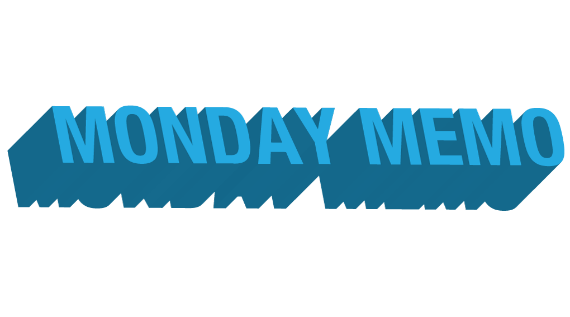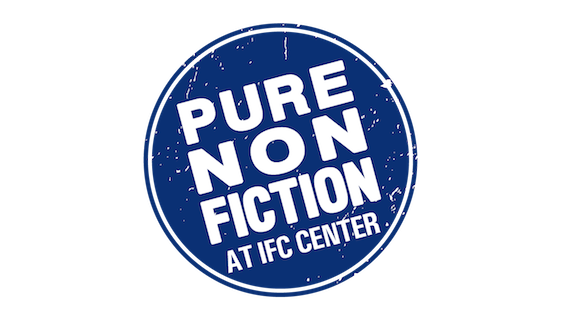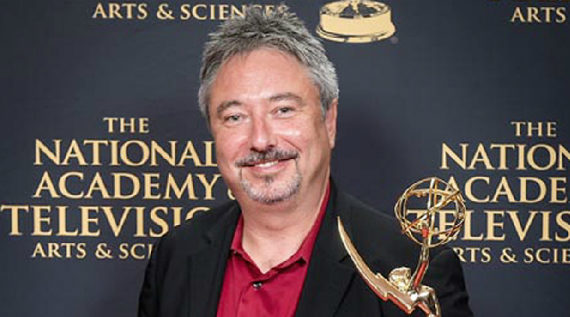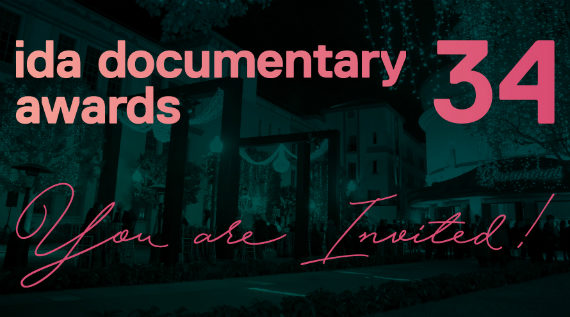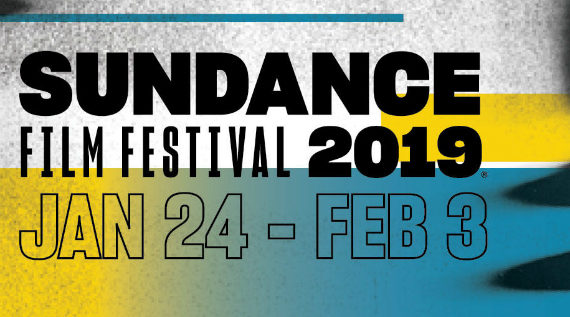Programmers occupy a unique space in the film landscape, serving as a force that both curates and supports films, while often remaining unknown to all but the most impassioned cinephiles. Given that STF Artistic Director Thom Powers has made programming documentary film his life’s work, I thought it would be interesting to get his views on the state of documentary in the year 2012. What follows is a conversation we had on December 30, 2012.
[This Q&A was edited for clarity]
Rahul Chadha: I guess the first question is, if you had to sum up the year in documentary, how would you do it?
Thom Powers: One of the things that impressed me about 2012 was the sizable output of really intellectually meaty films. And a lot of these films had to do with the Middle East—and I’m thinking of THE LAW IN THESE PARTS, or THE GATEKEEPERS. And outside of the Middle East I would point to THE CENTRAL PARK FIVE—films that had a really strong engagement with history and showed a depth of reporting and probing interviews that really added to our understanding of these different issues.
Chadha: Thematically, those films—and maybe you would throw WEST OF MEMPHIS in there too—investigate the idea that the law and ideas of justice are not always in accordance. Do you think there’s something specific about the times we live in that made that theme surface throughout the year?
Powers: I think that our flawed justice system has always needed journalism as an oversight and a way of correcting its mistakes and keeping pressure on it to be the best it can be. For most of the last century we’ve thought of newspapers or television reportage being there for that, but in recent years newspapers have severely cut back their reportorial staff, almost down to the bone. Television news departments have been cut back—television news in general has shifted to a talk show debate format. And it’s left a real gap for long-form investigative reportage. What’s encouraging is the way documentary film has entered that space. I think by no means is documentary film filling the loss of the cutbacks in other media in recent years, but one thing that documentary makers do uniquely is take a long time with a story. They take a year, or often longer than a year, to sit with a story, to pursue different sources, invest more resources—not because documentary filmmakers are richer than other media, far from it. But they’re usually the work of an obsessed individual or collective single-mindedly focused on one story. That’s compared with most news organizations, where reporters are lucky if they can concentrate on one story for a whole week. We mentioned THE CENTRAL PARK FIVE along with WEST OF MEMPHIS, I’d also throw in SCENES OF A CRIME. All three of those films have to do with the role of forced confessions as part of the American justice system. Individually those films are a strong argument for rethinking that practice, and when you watch two or three of them together, it’s an overwhelming argument.
Chadha: I think it’s interesting that while documentary is supplanting or replacing the absence of traditional long-form journalism, there were also several films that emerged with a different formal approach, films like ONLY THE YOUNG and TCHOUPITOULAS that were described by some as magic realism. I was wondering if you saw a trend in new formalist approaches by documentary filmmakers that moved away from the somewhat traditional idea of documentary as a form of journalism.
Powers: Well, one of the things I want to stress when we talk about documentary as a genre is that documentary is full of many sub-genres. So you have portrait films and first-person films and music films as well as investigative films and observational films. There’s such strong activity in the documentary sector that it just continues to grow. I remember a few years ago people talking about whether documentary had kind of peaked as a fad after FAHRENHEIT 9/11 had made over $100 million at the box office, and there was nothing that came close to that. I thought that was a kind of silly way to measure it. And contrary to that skepticism that you saw five or six years ago, the reality is just a continuing rise of documentary filmmaking. I think many factors contribute to this rise. Documentary films are still relatively cheap to make—relative to other kinds of filmmaking. There are more and more people who want to make films, and they have the tools to do it with the cameras they have for their home use. Many more people feel comfortable and proficient with software for desktop editing. When you’ve got that many people who are excited about the storytelling medium of film, it’s inevitable that they’re going to want to make more ambitious projects. And when the question comes, well, do I make a fiction film or do I make a documentary, the bar is set a lot lower to get into documentary making. You don’t need actors, a script, a costumer or set designer. You just need to find a good story.
Chadha: The flip side of that too is that while entry costs to documentary filmmaking have consistently been lowered by digital technology, it seems like there are either fewer institutional funding mechanisms, or that the competition for those limited sources for funds is getting ever-more competitive.
Powers: Documentary makers are quick and correct to point out that even though the equipment has gotten cheaper, there are some things that can never get cheaper, such as the cost of time. The single ingredient that sets a documentary apart from being an okay film to a great film is time, along with talent. And talent is partly a byproduct of time and practice. Being able to compensate people for their time, including the director, a skilled cinematographer, skilled editor, a composer and so on—that stuff does not get cheaper with lowered equipment prices. That’s something that, moving forward, as we appreciate what documentary filmmaking is able to do, I’d like to hope that more organizations will step forward to support with funding. I think what you were getting at is absolutely correct. You have some stellar organizations that have been at this for a long time, such as ITVS or the Sundance Institute, which celebrated its 10-year anniversary of its documentary fund this year. And you’ve got some smaller but vital funding bodies such as the Chicken & Egg fund for women filmmakers, but those organizations can serve somewhere between 50 and 100 projects a year, and aren’t even in a position to fully fund those projects. They’re typically supplying a quarter or half of their budgets. While at the same time you see more and more people vying for the same limited resources. The thing I feel hopeful about is the emergence of crowdfunding, which has really gotten a lot of projects going. I think Kickstarter and Indiegogo are fantastic tools for documentary filmmakers. Again, they’re not mechanisms for getting a fully funded, but they’re a great source for getting something started or getting bridge financing while you’re waiting for something else to come through.
Chadha: I was just reading the INDIE GAME: THE MOVIE case studies last night, and it was fascinating—just they way they used crowdfunding as a means of building their audience before they had even gotten into Sundance. The other thing that struck me about that model was the amount of time and energy they had to devote, not just to crowdfunding, but also to the self-distribution route.
Powers: These things do take time and energy, there’s no question. But so does making money in any business.
Chadha: I saw Skip Blumberg speak a few weeks ago, and he was talking about how you used to get a chunk of funding and you would use that to hire people to do your promotion or do your distro. Now these are all hats that filmmakers have to wear, or at least be conscious of, if they want to get their films out there. Again, what was really interesting about the INDIE GAME case studies is that they detailed all of the digital tools they used in order to take on those roles. It’s not that filmmakers need to take on the actual tasks related to managing the web site, as much as know enough about it to know who to talk to about it.
Powers: Yeah, I think we’re also seeing some specialists emerge in the field. I think of someone like Richard Abramowitz, who does theatrical booking for a lot of documentaries like EXIT THROUGH THE GIFT SHOP and BROOKLYN CASTLE. And I think of the social media marketing guru Marc Schiller who also worked on those films. And there are other bookers out there as well—Jim Browne, Wendy Lidell and others. I’d like to hope that the marketplace can create a viability for some of these other kinds of specialists to have careers so that when an independent filmmaker is looking to self-distribute, they can turn to a collection of freelancers who can fill some of the roles that a traditional distributor was supposed to supply.
Chadha: In September, Brian Newman referenced a post he had written a few years ago on his blog about the feature-length documentary, and how he thought that it was a dead or dying idea. He thought the future for docs would be shorter or episodic content that would live on the web. What do you think about that idea?
Powers: I think that’s a valid point. I don’t think that 90-minute films are dying by any means. Let me first make the case for the feature-length films, because I think it’s still a strong part of the culture. One of the great things about feature-length documentaries is that they are one of the few spaces in our multi-tasking culture where people will sit and concentrate for 90 minutes. The rest of our media experience is so fractured. If you’re reading an article on your computer, you’re likely to surf away to something else. How many times have you ever sat and concentrated for 90 minutes on anything? When we’re watching TV we’re surfing between channels. When you’re using social media it would be odd to concentrate on something for nine minutes, let alone 90 minutes. So the experience of going into a movie theater or watching a digital download on any of the emerging platforms where you’re concentrating in your own home and turning off your other devices, that’s something that I think people enjoy. They enjoy the experience that comes from a well-told story, and the layers of detail that accumulate in that time frame that’s missing from the rest of their lives. So I think there’s a distinct place for long-form storytelling.
But to get back to Brian’s point—I think there is unquestionably a growing space, and perhaps a larger space, for shorter form storytelling. And I think the documentary filmmaker of the 21st century who wants to have a viable career is going to need to be versatile in both of these formats. It’s very difficult, even for established filmmakers, to make a career out of long-form documentary. Doing one documentary is usually all-consuming. And when you finish the actual filmmaking of it, you may be spending another six months or one year on distribution. Once you get out of that, to get another project going often takes another six months to a year. That’s what makes these long-form documentaries special. They have a gestation period, and that period requires weeks and months of planning. Usually it’s that planning time that no one wants to pay you for. Broadcasters rarely invest money in development. At best, they might give out $10,000 for first look rights, but $10,000 does not go very far if it takes you six months to develop a project. And you can’t really do a Kickstarter campaign to develop a project, and there’s not really grant money out there for it. That’s really one of the weakest links in filmmaking right now.
So if you want to have a viable career during the time it’s taking you to develop the next project, you better have the skills and aptitude to make some shorter form work that not only is necessary for income, but also can have a sizable impact in its own way. One of the things that stands out to me in 2012 is listening to Eugene Jarecki talk about his experience making the short-form piece MOVE YOUR MONEY a couple of years ago. This is a short he made for YouTube distribution in the wake of the 2008 economic meltdown. The message of this short was a kind of Christmas-themed take off of IT’S A WONDERFUL LIFE, and the point was that if you don’t like the big banks of the Mr. Potter variety, then move your money into the smaller banks represented by George Bailey. The short film, he said, took him and a crew of about four people took him a few days to make, but it went viral and had a huge social impact on people who took that advice and moved their money. And he compared that to the long-form documentary he had been making at the same time about Ronald Reagan. That took him two or three years to make, and was seen by fewer people than the short was, and had less discernable cultural impact. I think both the long-form documentary and the short-form documentary have different roles to play, and I think documentary makers would be well-served to get their hands in both of those forms.
Chadha: I have a question that came via Twitter from @TheDocHierarchy which is, given the quality of docs, is the last barrier to getting people to watch them the “doc” label? I think the inference you’re supposed to make there is that the general public’s conception of documentary is still that they’re serious social issue films, and that watching one is work, and not necessarily entertainment, the way they expect a fictional narrative film to be.
Powers: I think we’ve come a long way from 10 or 20 years ago, when “documentary” was definitely a stigma label. You think back to when THE THIN BLUE LINE was released and Errol Morris and Miramax deliberately tried not to use the word documentary in talking about and promoting the film. Today I think there’s a world of difference. You see documentary used as a category on in-flight entertainment. And I think there’s a reason that documentary is used there—it’s because people are seeking it out. The high visibility of films like FAHRENHEIT 9/11 and SUPERSIZE ME and MARCH OF THE PENGUINS really were game changers for the brand of documentary. Now, that said, there’s still a long way to go. One of the things I appreciate out of the programming I do at the Miami International Film Festival is that I’m engaging with an audience that’s different from those in New York or Toronto, where there’s a real deep appreciation for documentary film. But in Miami there’s still more of a process that we’re midway through in making people excited about documentaries. I was encouraged in that our marketing department was recently making calls to its members and asking what they liked and what they didn’t like. And a number of people said they never used to pay attention to the documentaries, but in recent years had seen a couple and thought they were so good that now it’s one of the first sections that they look at. I think that comes out of some of the successful films I’ve shown in Miami, including THE IMPOSTER or PROJECT NIM. These are films that are as gripping as any fiction film, and sometimes more so.
Chadha: Is there anything in particular that surprised you about documentary film in 2012?
Powers: I don’t know if I have a good answer for that question. I think I’m kind of answering a different question with this, but something that I did feel strongly about in 2012 was that while we see this rise of documentary and rise of films that contain a lot to discuss, I think that a shortcoming of the documentary film ecosystem happens in the critical reception. Film criticism in general has suffered from serious setbacks in recent years as part of the general cutbacks in journalism. There are fewer film critics who have a decent means of making a living. And that’s too bad, because I think there’s more to talk about than ever before in filmmaking, and in documentary filmmaking in particular. A.O. Scott wrote that this year the New York Times reviewed over 800 films, setting a new record. That statistic tells you about how many films the critical community has to process. An unfortunate consequence of that is that I don’t think films get the kind of conversation around them that they deserve. Films are lucky to get a decent review on the day they’re released theatrically, but very seldom does that conversation continue beyond that date. And then the next week you’ve got a whole new crop of films out. I don’t think that we’re thinking as seriously about these films as they deserve. Filmmakers need not just financial returns, they also deserve and seek some kind of social impact. And social impact begins through conversation and critical discussion.
One of the things that I would like to see most and will do whatever I can to support in 2013 and coming years is creating more spaces for serious critical conversations about documentary film. I guess five or so years ago I wrote this piece on the STF blog called, “Wanted: Documentary Critics” and I think that the hopes I was expressing are still hopes waiting to be fulfilled. Every once in a while I see small signs of documentary films rising in their stature. This year I was pleased that when the New York Times did their end-of-year feature that A.O. Scott broke out a special list of non-fiction films. I hope the list of five that he did this year can grow into a list of 10 next year. Something I would like to see is for some of the journals of thought that are being reinvigorated, like The Atlantic Monthly and The New Republic, to develop writers who can focus on documentary film and the important place it has in our culture. Looking ahead to 2013 when we’re going to see films like THE ACT OF KILLING that premiered in Toronto come out, and Errol Morris’ film on Donald Rumsfeld, and certainly the many films playing at the Sundance Film Festival that look like they’re going to be eminently worthy of conversation—I hope that there are going to be new voices who can stake out an expertise in documentary writing to give these films the context that they deserve.
Chadha: Do you foresee any trends for 2013?
Powers: Well, something worth thinking about this time of year is the Oscars. I think the changing of the rules that Michael Moore really spearheaded were overwhelmingly positive. This was the first year that I thought the shortlist was full of 15 very worthy films, and didn’t have some of the head-scratching titles that came out of the old process. Certainly there are other worthy films that didn’t make it onto the shortlist, I think of films like THE CENTRAL PARK FIVE, WEST OF MEMPHIS, THE QUEEN OF VERSAILLES, MARINA ABRAMOVIC, SAMSARA—you could probably make a list of 15 other very worthy films, which I think shows you the breadth of quality happening in documentary filmmaking today. I think that the worries that people had were not fulfilled by the outcome. People were worried that smaller films would get overlooked, but the shortlist contains works by newcomer filmmakers and the inclusion of a film like THE WAITING ROOM, which would be considered a small film by any measure in the release it had, yet it’s quality was recognized. I think a loser of the new rules is IDA’s DocuWeeks program, where none of the [feature] films that played in the program made the shortlist this year. [Ed. note: three short docs from DocuWeeks 2012 made the Oscar short list]. While that program made more sense in previous years, it needs some rethinking for its future. And talking about the Oscars, I also give Michael Moore a lot of credit for campaigning for D.A. Pennebaker to receive his honorary Oscar—that was something that was long overdue, and I’m glad it happened.
Chadha: Do you have any Oscar prognostications that you want to share?
Powers: I think that of the Oscar shortlist, I would be shocked if SEARCHING FOR SUGAR MAN didn’t have a place in the final nominees. I think that THE GATEKEEPERS–given the way it’s been received at festivals, and given the way that the critical community has spoken about it in the highest possible terms–I would consider it a contender for one of the five slots. I think that the other three are totally up for grabs. I would love to see THIS IS NOT A FILM grab one of those slots. Not only is it a great film, but there’s a remarkable story behind its filmmaker making that film under house arrest in Iran. There are more than five good films to be nominated.

